Abstract
In two experiments, the performance of rats under constant-probability and arithmetic variable-interval schedules respectively was compared when the concentration of a liquid reinforcer was varied within sessions; in other sessions, half of the reinforcers were randomly omitted. When the discriminative function of the reinforcer as a signal for a decrease in the probability of reinforcement was attenuated (the constant-probability schedule) the postreinforcement pause duration was nevertheless an increasing function of reinforcer magnitude. This relationship was also present, but more marked, when the temporal discriminative function of the reinforcer was enhanced (the arithmetic schedule). These results suggested that reinforcement has an unconditioned suppressive effect on the reinforced response distinct from any discriminative function it may acquire. The reinforcement-omission effect, where response rate accelerates following omission, was observed when the reinforcer functioned as an effective temporal discriminative stimulus, but not when such temporal control was absent.
Keywords: inhibition, discriminative control, postreinforcement pause, constant probability variable interval, arithmetic variable interval, rats
Full text
PDF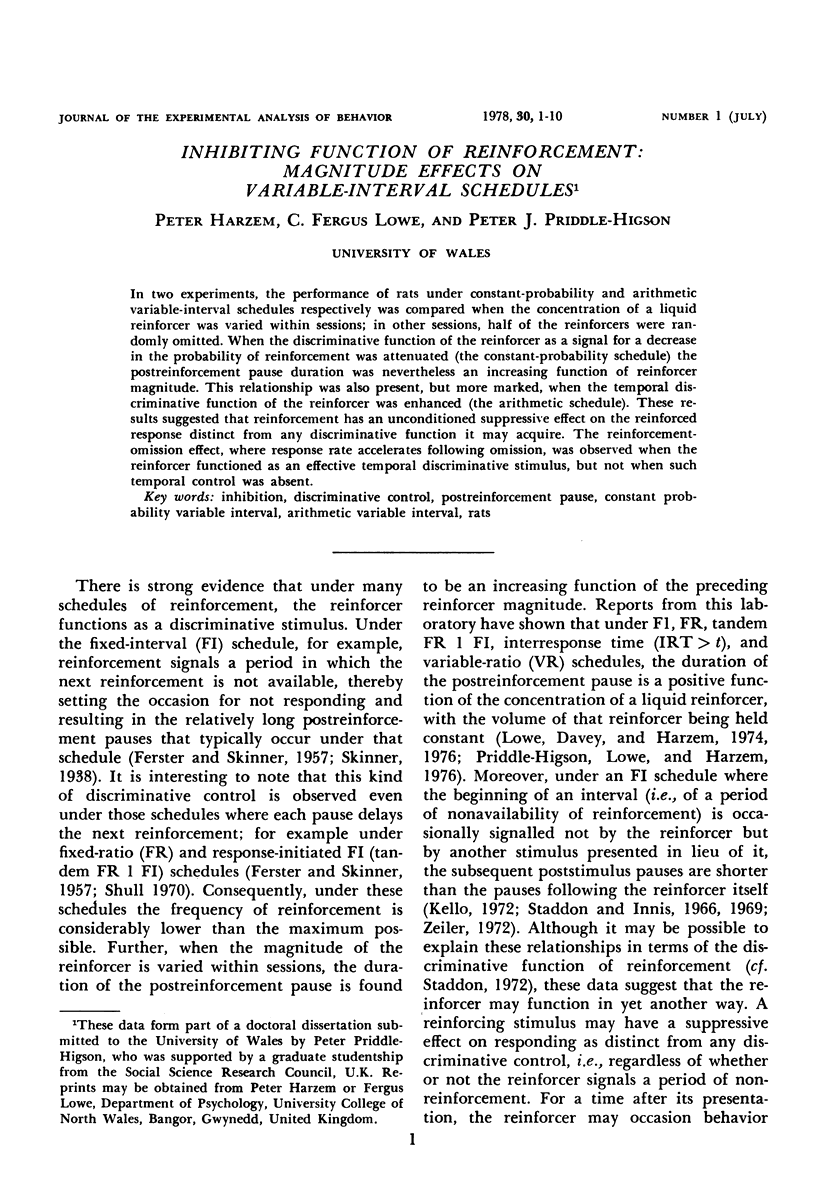
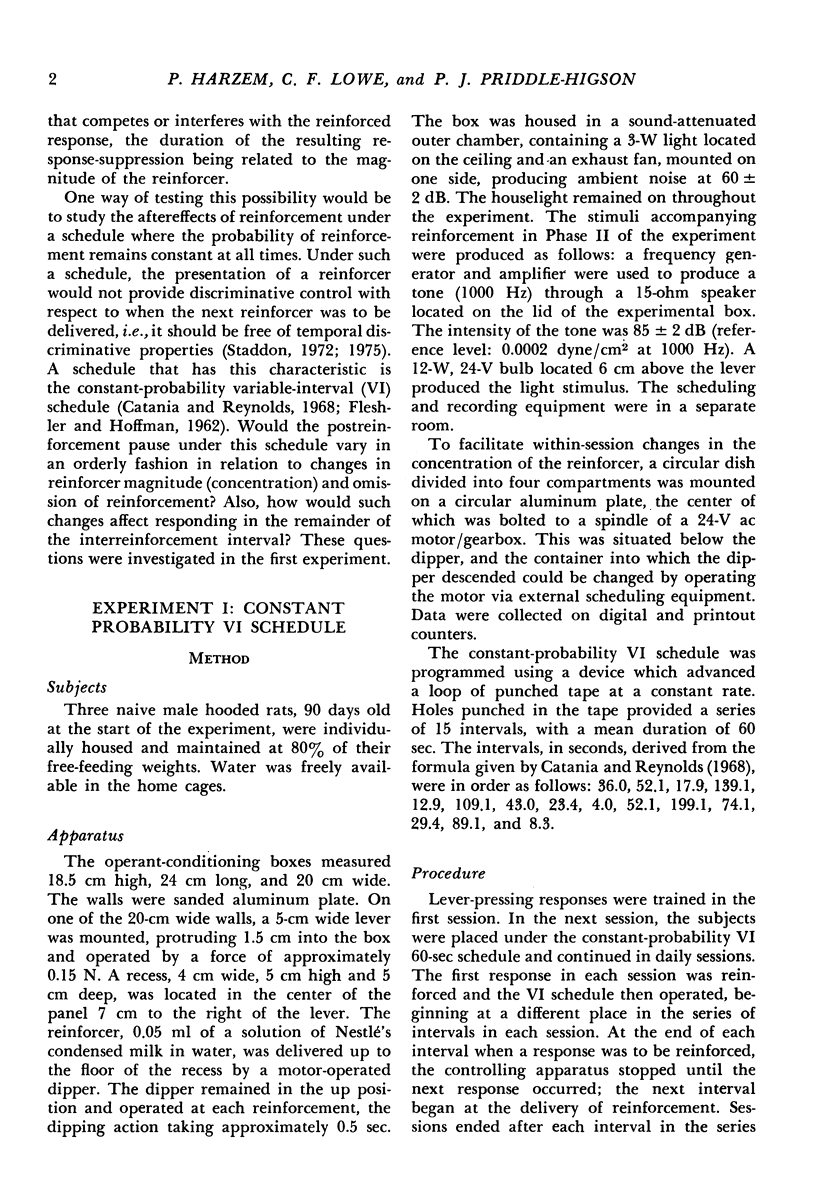
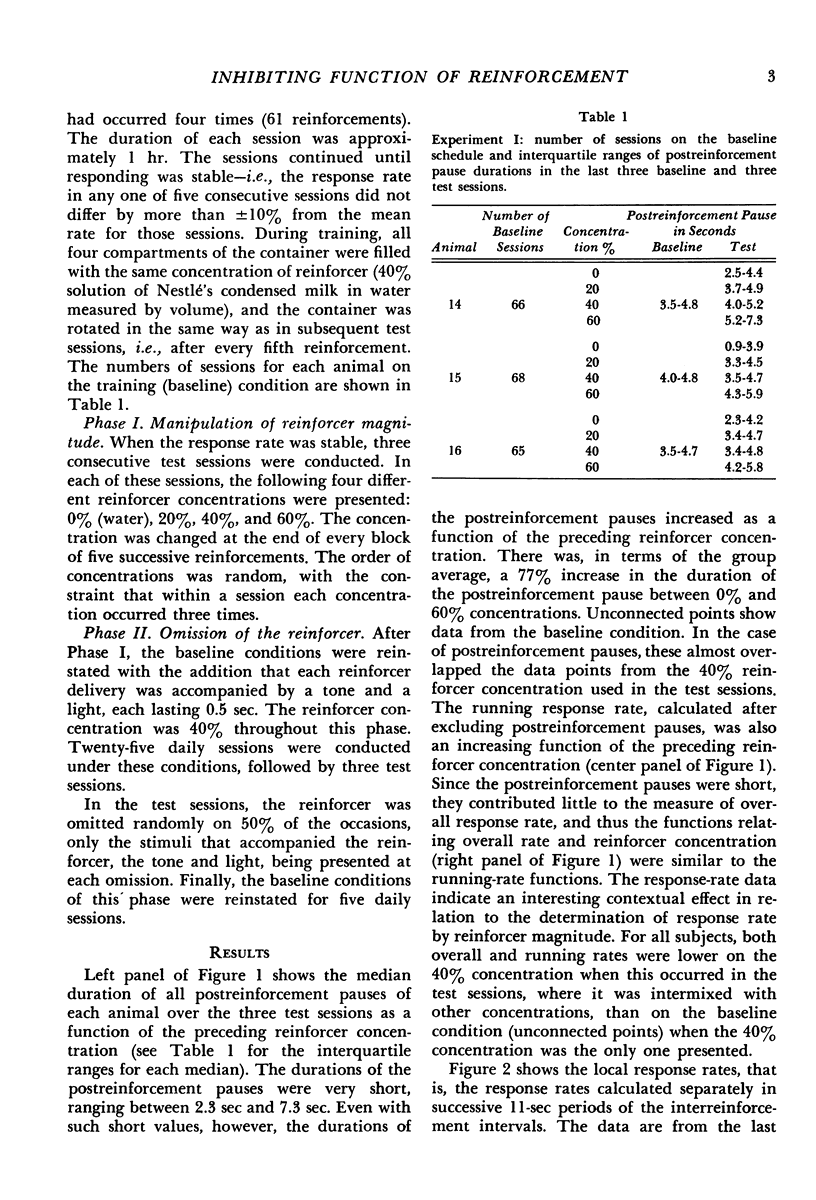
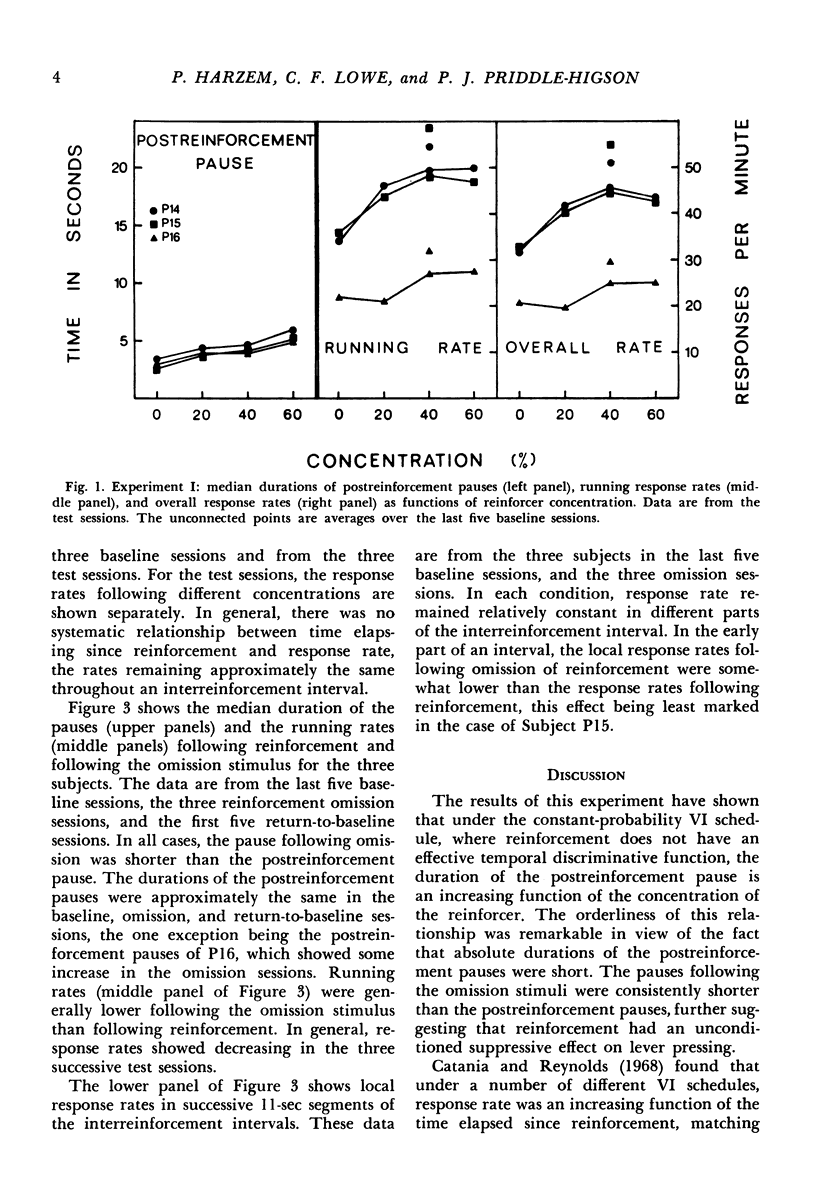
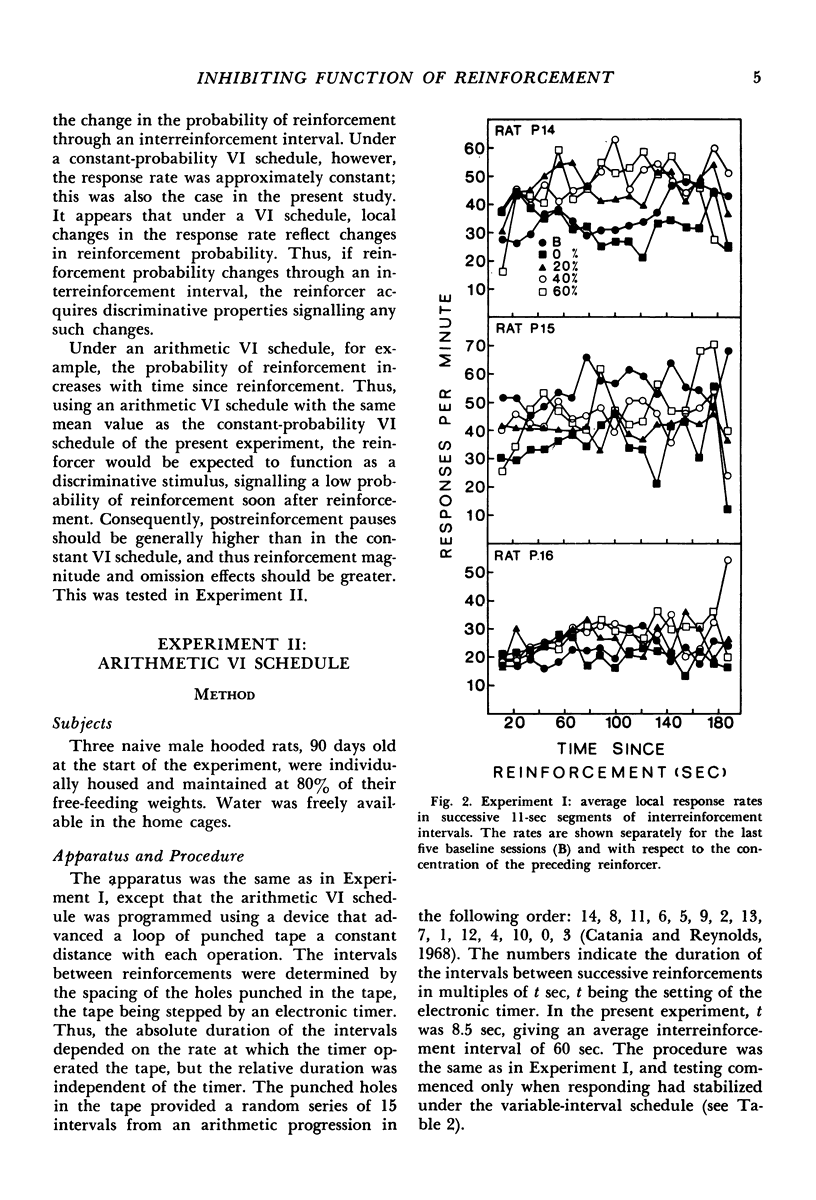
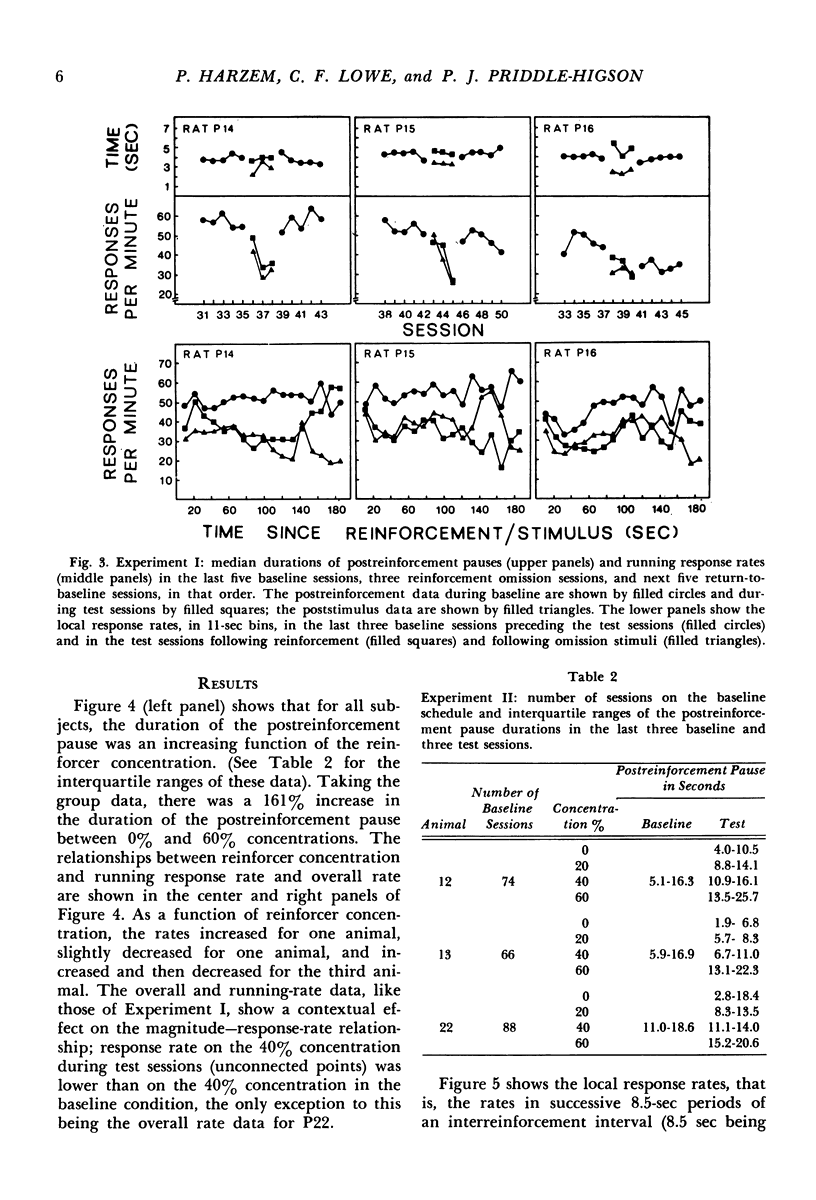
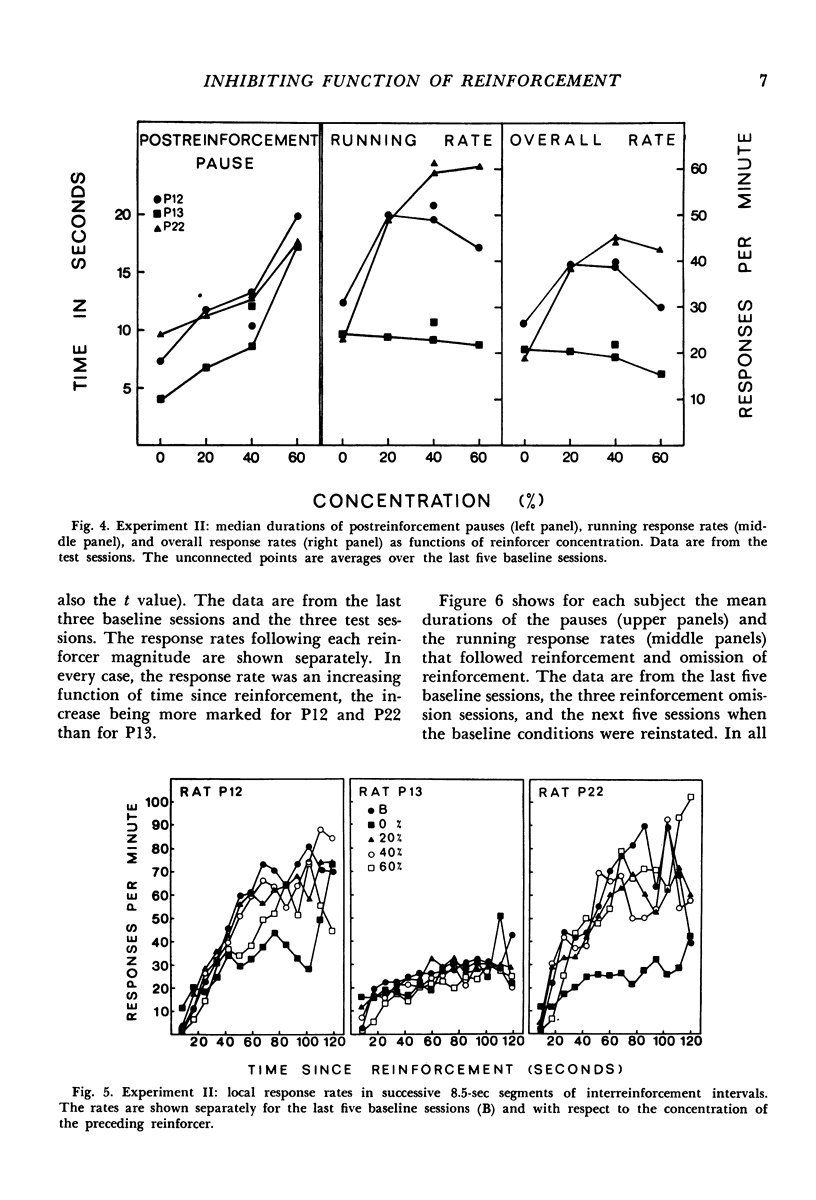
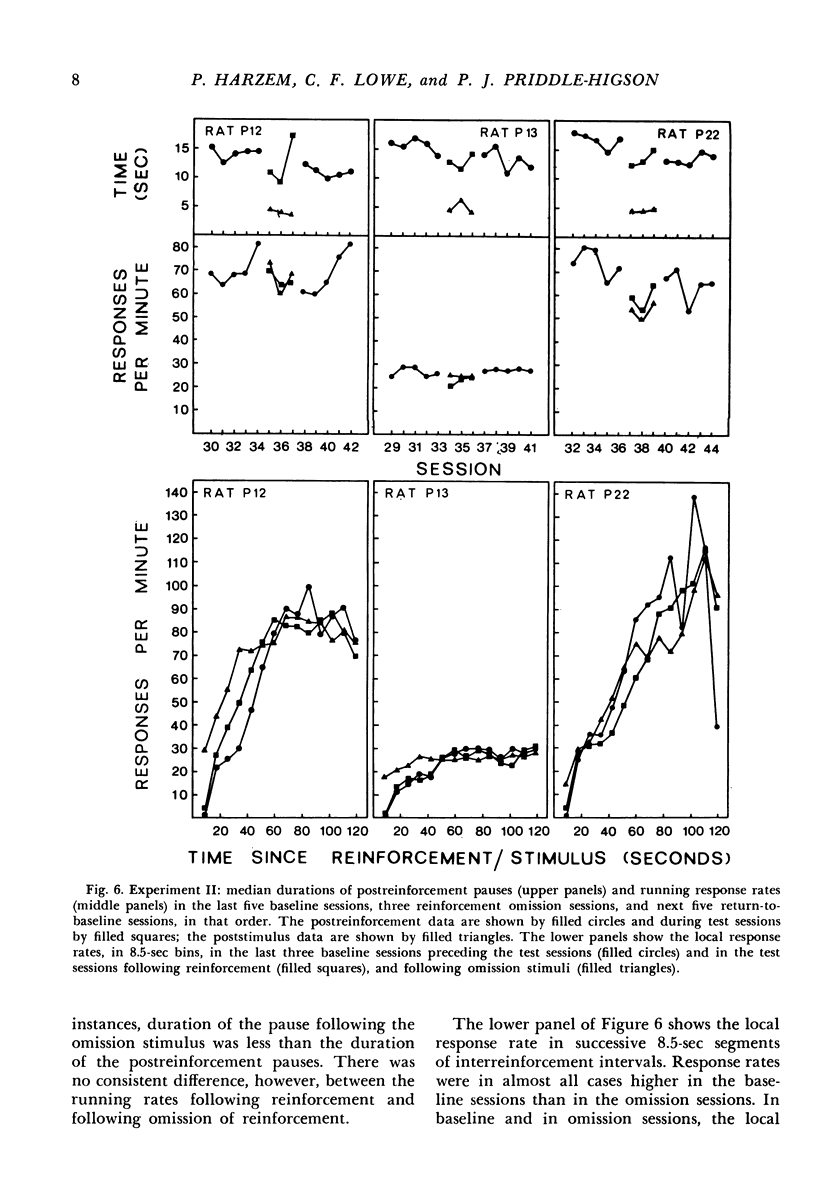
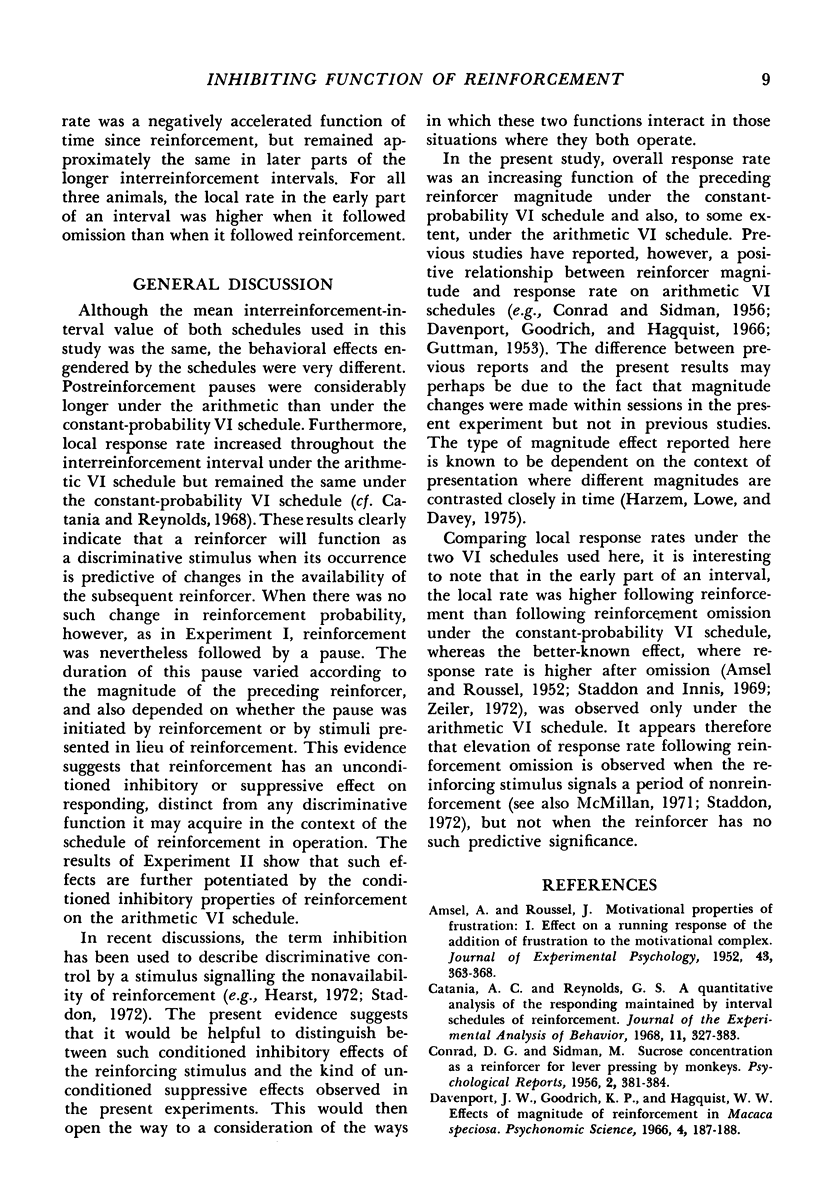
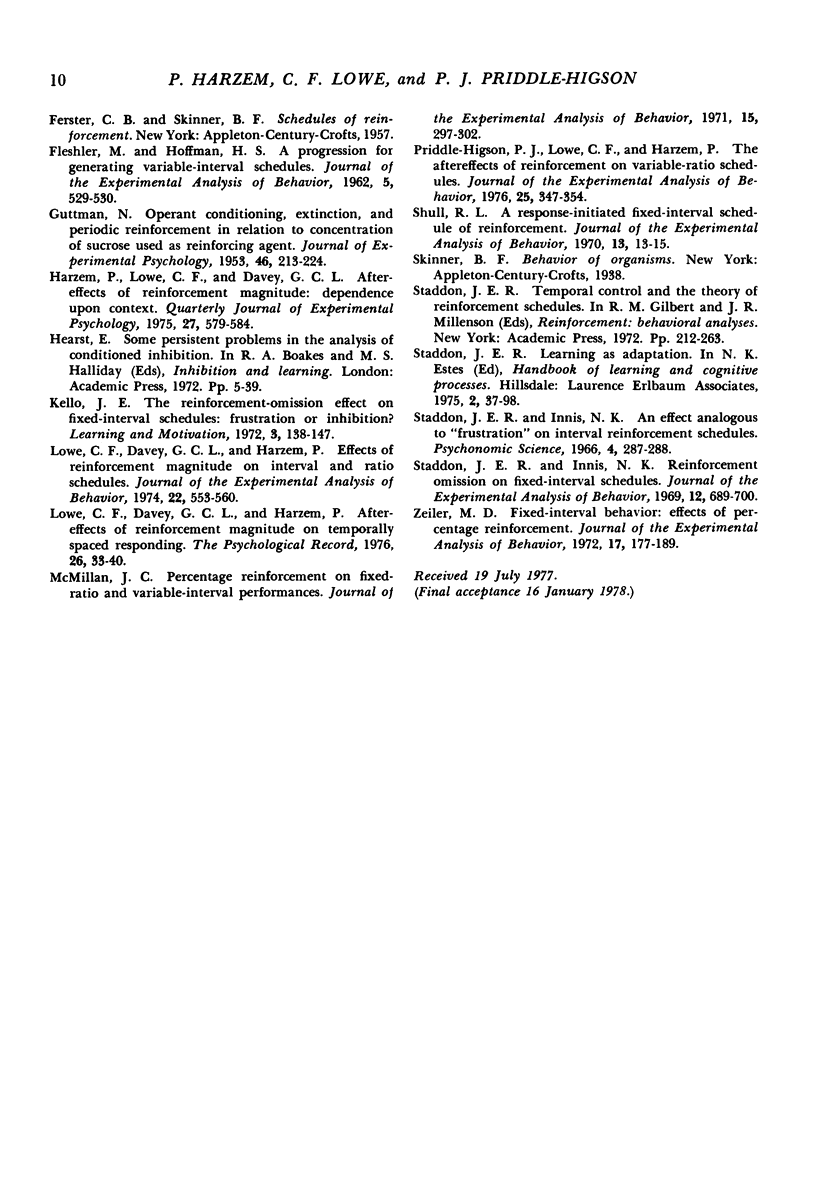
Selected References
These references are in PubMed. This may not be the complete list of references from this article.
- AMSEL A., ROUSSEL J. Motivational properties of frustration. I. Effect on a running response of the addition of frustration to the motivational complex. J Exp Psychol. 1952 May;43(5):363–366. doi: 10.1037/h0059393. [DOI] [PubMed] [Google Scholar]
- Catania A. C., Reynolds G. S. A quantitative analysis of the responding maintained by interval schedules of reinforcement. J Exp Anal Behav. 1968 May;11(3 Suppl):327–383. doi: 10.1901/jeab.1968.11-s327. [DOI] [PMC free article] [PubMed] [Google Scholar]
- FLESHLER M., HOFFMAN H. S. A progression for generating variable-interval schedules. J Exp Anal Behav. 1962 Oct;5:529–530. doi: 10.1901/jeab.1962.5-529. [DOI] [PMC free article] [PubMed] [Google Scholar]
- GUTTMAN N. Operant conditioning, extinction, and periodic reinforcement in relation to concentration of sucrose used as reinforcing agent. J Exp Psychol. 1953 Oct;46(4):213–224. doi: 10.1037/h0061893. [DOI] [PubMed] [Google Scholar]
- Lowe C. F., Davey G. C., Harzem P. Effects of reinforcement magnitude on interval and ratio schedules. J Exp Anal Behav. 1974 Nov;22(3):553–560. doi: 10.1901/jeab.1974.22-553. [DOI] [PMC free article] [PubMed] [Google Scholar]
- McMillan J. C. Percentage reinforcement of fixed-ratio and variable-interval performances. J Exp Anal Behav. 1971 May;15(3):297–302. doi: 10.1901/jeab.1971.15-297. [DOI] [PMC free article] [PubMed] [Google Scholar]
- Priddle-Higson P. J., Lowe C. F., Harzem P. Aftereffects of reinforcement on variable-ratio schedules. J Exp Anal Behav. 1976 May;25(3):347–354. doi: 10.1901/jeab.1976.25-347. [DOI] [PMC free article] [PubMed] [Google Scholar]
- Shull R. L. A response-initiated fixed-interval schedule of reinforcement. J Exp Anal Behav. 1970 Jan;13(1):13–15. doi: 10.1901/jeab.1970.13-13. [DOI] [PMC free article] [PubMed] [Google Scholar]
- Staddon J. E., Innis N. K. Reinforcement omission on fixed-interval schedules. J Exp Anal Behav. 1969 Sep;12(5):689–700. doi: 10.1901/jeab.1969.12-689. [DOI] [PMC free article] [PubMed] [Google Scholar]
- Zeiler M. D. Fixed-interval behavior: effects of percentage reinforcement. J Exp Anal Behav. 1972 Mar;17(2):177–189. doi: 10.1901/jeab.1972.17-177. [DOI] [PMC free article] [PubMed] [Google Scholar]


